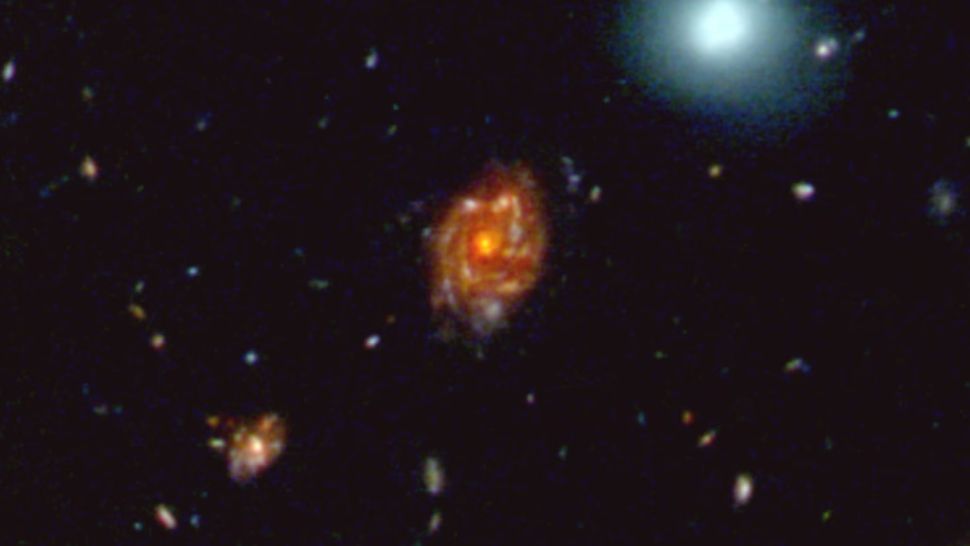JWST finds spiral galaxy about 5 times more massive than Milky Way -- scientists call it 'Big Wheel'
By Larissa G. Capella published 2 days ago
It existed just 2 billion years after the Big Bang.

The JWST's image of the Big Wheel galaxy, a massive rotating disk 11.7 billion light-years away. Its spiral stretches 100,000 light-years, making it the largest confirmed galaxy of its time. Nearby galaxies appear as blue blobs, with a larger galaxy to the lower left part of the same structure. (Image credit: NASA/ESA)
A team of astronomers at the University of Milano-Bicocca has uncovered a colossal spiral galaxy that existed just 2 billion years after the Big Bang, which gave birth to the universe some 13.8 billion years ago. Nicknamed "Big Wheel," it is in fact one of the largest galaxies ever observed from this early cosmic era.
The scientists found Big Wheel near a quasar, which is a powerful and active supermassive black hole, using the James Webb Space Telescope (JWST). The galaxy lies 11.7 billion light-years away from our corner of the cosmos, and its given nickname comes from its remarkably fast rotation and huge size. It's five times more massive than the Milky Way, for context, stretches across 100,000 light-years.
More specifically, the astronomers used new spectroscopic observations with the JWST's Near-Infrared Spectrograph (NIRSpec) to confirm that Big Wheel is a rotating disk. The galaxy's rotation curve, an important characteristic of spiral galaxies, shows a pattern typical of flat rotation curves seen in mature galaxies. The velocity of the galaxy's rotation increases as you move outward from the center, reaching a maximum rotational velocity of several hundred miles per second, which is also similar to much more developed galaxies.
Big Wheel's rotational velocity also aligns with the local Tully-Fisher relationship, a correlation between the size and rotation speed of galaxies observed today. What this all means it that, despite its youth, the galaxy behaves in a manner consistent with some of the largest, most mature spiral galaxies we see in the present universe. Big Wheel exists during a time when most galaxies are expected to be small and in their earliest stages of development. Yet, it's fully formed.
More:
https://www.space.com/space-exploration/james-webb-space-telescope/jwst-finds-spiral-galaxy-about-5-times-more-massive-than-milky-way-scientists-call-it-big-wheel
